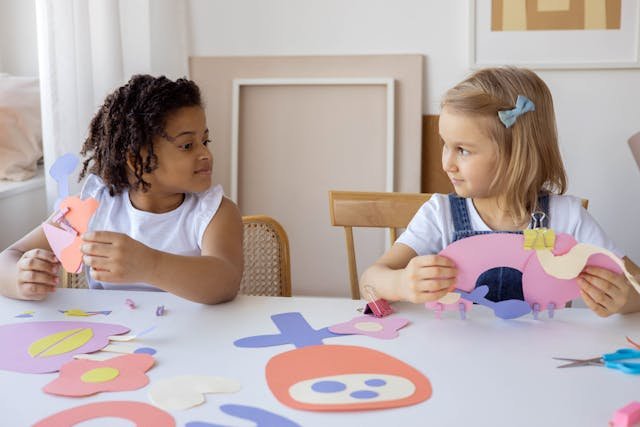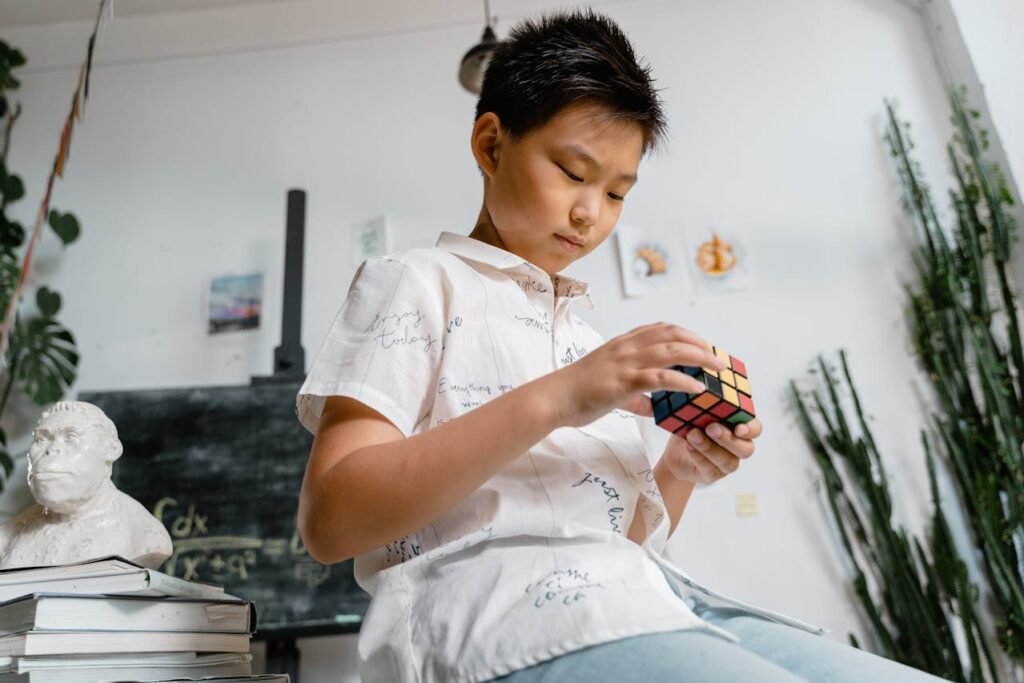Every child is born curious. From the moment they start exploring the world, they are already solving problems—figuring out how to reach a toy, how to ask for help, or how to put pieces of a puzzle together. As children grow, their problem-solving skills grow with them, becoming more complex, creative, and powerful.
But here’s the interesting part: problem-solving doesn’t look the same at every age. A three-year-old and a teenager may both be solving problems, but the way they think, the strategies they use, and the mistakes they make are very different.
In this article, we’ll walk through how problem-solving develops step by step, from the early years of simple trial-and-error thinking to the teenage years of logical planning and critical analysis. By the end, you’ll see not only how children evolve as thinkers but also how parents and teachers can support them at each stage.
Ages 3 to 5: The First Steps in Problem-Solving
At this stage, problem-solving is all about exploration. Children are just beginning to understand how the world works. They rely heavily on trial and error—testing one idea, then another, until something finally works.
Think of a three-year-old trying to stack blocks. They don’t sit down and plan how tall the tower can be or what shape will work best. They simply try. If the tower falls, they try again, often laughing, sometimes crying, but always learning.
The “problems” they solve at this age are simple and concrete: How do I fit this puzzle piece? How do I open this box? How do I reach that toy on the shelf? They learn by touching, experimenting, and copying what adults or older kids show them.
Emotions as a Big Part of Problem-Solving
For young children, emotions are closely tied to problem-solving. A challenge can feel frustrating, and frustration can quickly turn into tears. But with encouragement, they also learn persistence—the ability to try again even after failure.
This is where parents and teachers play a huge role. By offering gentle guidance and celebrating small successes, adults teach children that mistakes aren’t the end—they are just part of the learning process.
The Role of Play
Play is not just fun for children—it’s serious problem-solving work. When a four-year-old pretends to cook in a play kitchen, they are copying real-life processes, making decisions, and solving pretend problems. When they build with blocks, they are experimenting with balance and design.
Even games like hide-and-seek sharpen problem-solving skills, because children learn how to plan their hiding spot, predict where others might look, and adjust their strategies each time.
Language and Problem-Solving
At this age, children also start using words to express their problems. A three-year-old might say, “Help, I can’t do it,” while a five-year-old may explain, “This piece doesn’t fit here.” By putting thoughts into words, they begin to understand problems more clearly and ask for help in more specific ways.
Language turns thinking into something visible and shareable, and this makes solving problems a lot easier.
Ages 6 to 9: Building Structure and Strategy
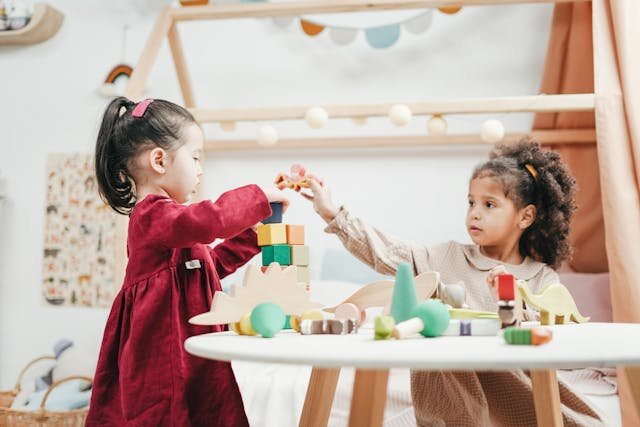
By the time children enter primary school, their problem-solving skills become more organized. Instead of only relying on trial and error, they start to think ahead. They begin to understand that if they follow certain steps, they’re more likely to solve a problem successfully.
Take a math problem as an example. A six-year-old might count on their fingers to find the answer, while a nine-year-old may already know a shortcut, like grouping numbers or spotting patterns. Both are solving problems, but the older child is beginning to build real strategies.
Problem-Solving in Everyday Life
At this stage, kids face bigger challenges beyond puzzles and toys. They need to figure out how to complete schoolwork, how to organize their time, and even how to handle friendships. If two children want the same swing at recess, they must figure out how to share or take turns. These are real-world problems that require both thinking and empathy.
Children also begin to understand cause and effect more clearly. They realize that their actions have consequences: If I forget my homework, the teacher will ask me about it. If I save my allowance, I’ll have enough money for a bigger toy. This kind of reasoning shows a shift from impulsive decisions to considered choices.
Mistakes as Learning Tools
One of the most important developments at this stage is that children begin to see mistakes differently. Instead of just feeling upset when something doesn’t work, they may reflect on what went wrong. A child building a Lego house, for example, may notice that the base is too small to hold the walls, and next time, they start with a wider foundation.
This reflection is the first step toward critical thinking—an ability that will grow stronger in later years.
The Role of School
School plays a huge role in sharpening problem-solving at this age. Subjects like math and science encourage logical steps, while reading and writing build comprehension and creativity. Group activities in class also push kids to collaborate, listen to different ideas, and work toward a common solution.
It’s in these early school years that children often start enjoying problem-solving as a challenge rather than just a necessity. They begin to feel the satisfaction of finding the “right” answer, and that feeling motivates them to keep trying.
Growing Independence
Around ages 8 and 9, children begin to take pride in solving problems without always asking for help. They like to prove to themselves—and to others—that they can do it. Parents and teachers can support this by giving them room to experiment, even if it means failing a few times before success.
This independence is key. It sets the stage for the next stage of development, where problem-solving becomes even more creative and logical.
Ages 10 to 12: The Pre-Teen Shift
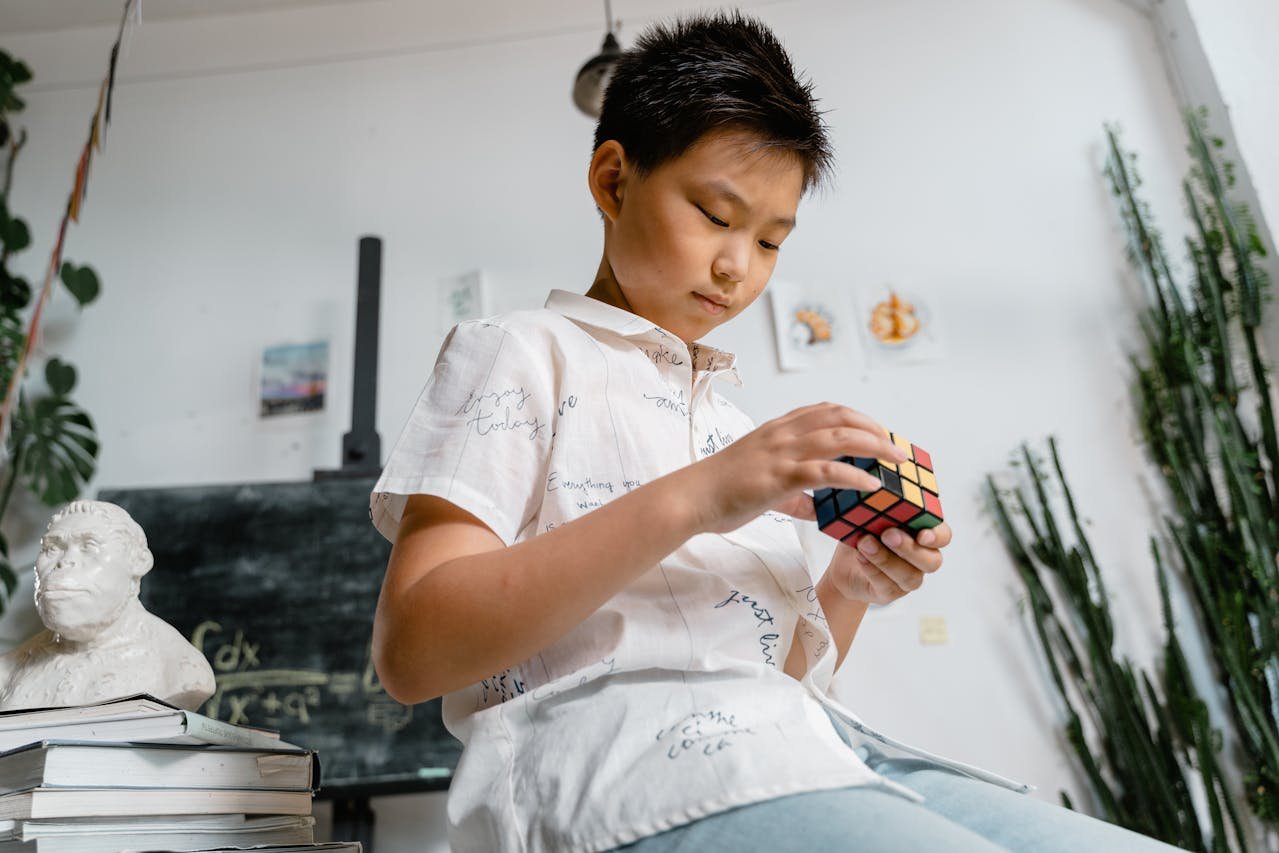
By the time children reach 10 to 12, their problem-solving skills begin to look more like those of adults. They can handle bigger challenges, think about more than one solution at a time, and even predict possible outcomes before making a choice. This is the age where reasoning and logic take a big leap forward.
At this stage, kids can break down problems into smaller parts. For example, instead of panicking when faced with a long math problem, they may split it into steps: first solve this piece, then move to the next, then put it all together. This ability to sequence and organize thinking makes problem-solving smoother and more effective.
Thinking Beyond the Obvious
Pre-teens also begin to see that most problems don’t have just one answer. If they’re asked to design a bridge out of straws, they might come up with several different shapes and test each one. If they have a disagreement with a friend, they can imagine more than one way to fix it—talking it out, compromising, or asking for help.
This flexibility shows a major shift from earlier years, where children usually saw problems in simple black-and-white terms.
Social Problem-Solving
Friendships become very important in these years, and with that comes more complex social challenges. A child may need to figure out how to include a friend in a game, how to deal with teasing, or how to balance schoolwork with social time.
These are not problems with clear step-by-step answers. They require empathy, listening, and compromise. This is when problem-solving begins to blend emotional intelligence with logic, helping children understand not just what they want, but also what others feel.
The Role of Questions
Pre-teens love to ask “why.” Why is the sky blue? Why do we have to follow these rules? Why can’t things be different? These questions show that they are moving from simple learning to critical thinking. They’re no longer satisfied with surface answers—they want reasons, proof, and deeper understanding.
This curiosity is a powerful driver for problem-solving. It encourages them to test ideas, challenge assumptions, and look for evidence before deciding.
Independence with Guidance
Children at this stage can often solve problems on their own, but they still need guidance. A parent or teacher’s role shifts from giving direct answers to asking guiding questions: “What do you think would happen if you tried it this way?” This approach encourages them to think through the problem independently, while still feeling supported.
Ages 13 to 15: The Teenage Leap

In the early teen years, problem-solving takes a big leap forward. This is when children begin to think more like adults, but with the added energy, creativity, and sometimes impulsiveness of adolescence. Their brains are developing rapidly, especially in areas linked to reasoning, planning, and decision-making.
At this age, teenagers start to see problems as systems rather than isolated events. For example, instead of just solving a math problem step by step, they may look for patterns that connect multiple problems together. Instead of only reacting to a conflict with a friend, they begin to think about the bigger picture of their relationships and reputation.
Abstract Thinking Emerges
One of the biggest changes is that teens can now think in the abstract. Younger children mostly deal with concrete problems—things they can see or touch. But by 13 to 15, teens can consider ideas, possibilities, and “what if” scenarios.
This means they can imagine outcomes before they happen. They can think: If I spend all night gaming, I’ll be tired tomorrow and maybe perform badly in class. They may not always make the right choice, but the ability to weigh possibilities is now present.
Social Problem-Solving Gets More Complex
Friendships, peer pressure, and identity play a huge role in teenage problem-solving. Teens at this age often face dilemmas like: Should I go along with my friends even if I disagree? How do I handle an argument without losing someone’s trust? These problems are trickier than puzzles or math equations because they don’t have clear answers.
Problem-solving here requires empathy, self-awareness, and negotiation. Teens begin to understand that people’s perspectives differ, and solutions sometimes mean compromise, not winning.
Creativity in Solutions
Teenagers also become more creative problem-solvers. They may brainstorm unusual ideas, combine different approaches, or come up with shortcuts that adults might not consider. This creativity is powerful, but it can also lead to risk-taking if not guided well.
For example, a 14-year-old working on a science project might invent a clever design that no one else thought of. But the same creative brain might also try unsafe shortcuts in daily life, like staying up too late to finish work at the last minute. The key is helping teens channel their creativity into safe, constructive solutions.
The Struggle with Impulse
Even though abstract thinking is growing, teens in this stage still struggle with impulse control. Their brains are wired for excitement and reward, which can sometimes lead them to make quick decisions without thinking them through fully.
This is why guidance is still important. Parents and teachers can encourage teens to pause and reflect: “What do you think might happen if you choose this option?” Over time, this practice helps them slow down and consider consequences before acting.
Ages 16 to 18: Preparing for Adulthood

By the time teens reach 16 to 18, their problem-solving skills are approaching adult levels. Their brains are more developed, especially in the areas that control planning, logic, and self-control. They are able to tackle complex problems with multiple layers, weigh long-term consequences, and make more independent decisions.
This stage is a turning point. Teens are not just solving problems for school or friendships anymore—they’re preparing for real-world challenges. Decisions about careers, relationships, money, and independence all begin to appear, and their problem-solving skills are tested in bigger ways than ever before.
Strategic Thinking
Unlike younger teens, 16- to 18-year-olds can plan several steps ahead. They can look at a goal and break it into smaller actions, then follow through. For example, if they want to apply to college, they can map out deadlines, prepare for exams, and gather documents, understanding that each step leads to a bigger outcome.
This ability to see the big picture and think strategically is what makes them capable of handling adult-like responsibilities.
Balancing Logic and Emotion
At this age, teens also start balancing logic with emotion more effectively. While 13- to 15-year-olds may act more impulsively, older teens can pause and reflect before reacting. They may still feel strong emotions, but they have learned (with practice) to manage them when solving problems.
For instance, in a heated argument with a friend, a 17-year-old is more likely to step back, consider the friend’s perspective, and find a compromise. This doesn’t mean they always do—but they now have the skills to handle conflicts in healthier ways.
Facing Real-World Problems
Older teens face bigger problems than ever before. These include academic pressure, preparing for higher education or jobs, managing money, and balancing independence with family expectations. Unlike childhood challenges, these problems don’t have simple answers.
For example, a teenager choosing a career path must weigh their interests, strengths, financial needs, and opportunities. It requires research, self-reflection, and long-term planning—skills that build on everything they’ve learned since childhood.
Independence and Responsibility
Problem-solving at this stage also carries more weight because older teens begin making decisions with lasting consequences. Choosing to skip school, overspend money, or avoid responsibility has real outcomes. On the other hand, making smart choices—like practicing time management, saving money, or seeking advice—builds confidence and prepares them for adulthood.
This is also the age where guidance shifts into mentorship. Parents and teachers are less about telling teens what to do and more about supporting them in thinking critically, asking questions, and trusting their own judgment.
The Final Stage Before Adulthood
By 18, many young people are ready to make decisions on their own. They’ve moved from trial-and-error thinking at age 3 to strategic, logical planning at age 18. They are not perfect problem-solvers (no one is), but they now have the tools to face life with confidence, creativity, and resilience.
Supporting Problem-Solving at Every Stage
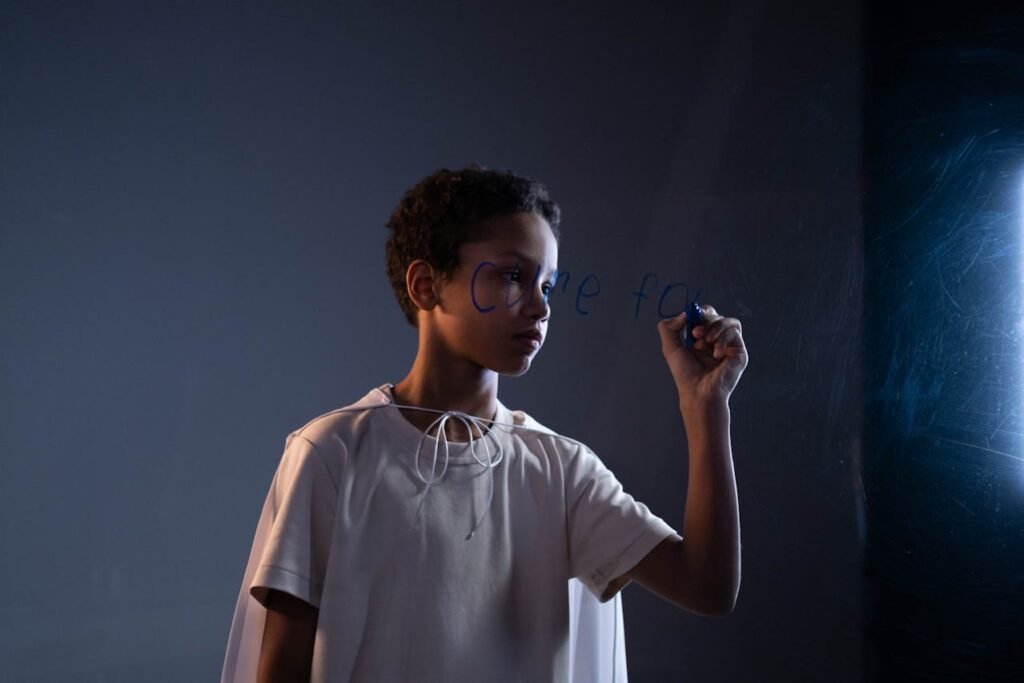
Problem-solving doesn’t grow automatically. It’s shaped by the environment, by experiences, and by the guidance children receive from the adults around them. Parents and teachers play a huge role—not by giving all the answers, but by creating opportunities for children to think, try, and learn.
Ages 3 to 5: Encouragement and Play
For young children, problem-solving is rooted in play and exploration. Parents can encourage this by giving them safe challenges: building towers, solving simple puzzles, or letting them try things on their own. When the tower falls or the puzzle piece doesn’t fit, instead of stepping in immediately, ask gentle questions: “What else could you try?”
The goal is not to push for success but to normalize mistakes. Children at this stage need to learn that failing and trying again is part of the process. Celebrating effort builds resilience.
Ages 6 to 9: Guiding Without Controlling
In early school years, children benefit from structure but also need space to think for themselves. Parents and teachers can support them by showing step-by-step approaches while still letting them do the work. For example, when solving a math problem, instead of giving the answer, guide them with prompts like: “What’s the first thing you notice?”
Socially, this is also a time to teach conflict resolution. When disagreements happen, encourage kids to use words, listen to others, and brainstorm fair solutions. These are skills they’ll use for life.
Ages 10 to 12: Encouraging Reflection
Pre-teens are ready to think more deeply. At this stage, parents and teachers can encourage them to reflect on mistakes: “Why do you think that didn’t work?” or “What would you do differently next time?”
This reflection helps children connect actions to outcomes and begin forming logical strategies. It’s also a great time to expose them to open-ended problems, like science projects or creative writing prompts, where there’s no single “right” answer. This nurtures flexible thinking.
Ages 13 to 15: Supporting Independence
Teenagers need space to make their own choices, but they still need guidance to weigh risks and consequences. Adults can support by asking guiding questions: “What do you think will happen if you take this path?” or “What’s another way you could approach this?”
This stage is also about emotional problem-solving. Teens may struggle with peer pressure, identity, and social dynamics. Here, listening becomes just as important as advising. Sometimes they don’t need solutions handed to them—they need someone to hear them out as they work through the problem themselves.
Ages 16 to 18: Mentorship, Not Micromanagement
Older teens are preparing for adulthood. Parents and teachers shift into the role of mentors. Instead of telling teens what to do, adults should encourage them to research, plan, and make informed decisions. For example, if a teenager is choosing a career path, ask questions like: “What do you enjoy most?” or “What are the pros and cons of each option?”
Mistakes will still happen, but they are part of learning independence. The goal is to provide support while respecting that these young adults are ready to think and decide for themselves.
In every stage, the best gift parents and teachers can give is confidence. When children feel safe to try, fail, and try again, they grow into resilient thinkers who can face any challenge.
How Debsie Helps Children Strengthen Problem-Solving Skills
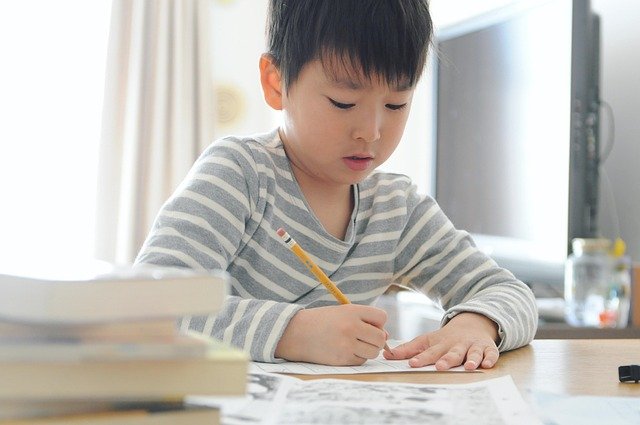
At Debsie, we believe that problem-solving is not just a skill for school—it’s a skill for life. Whether a child is 3 years old and learning to fit puzzle pieces, or 18 years old and preparing for real-world decisions, problem-solving is at the heart of growth. That’s why our teaching is designed to meet children exactly where they are and guide them toward becoming confident, independent thinkers.
Learning That Feels Like Play for Young Kids
For ages 3 to 5, Debsie focuses on playful learning. Children explore puzzles, stories, and simple challenges that spark curiosity. When they stack blocks, solve riddles, or listen to interactive lessons, they’re not just playing—they’re practicing trial and error, persistence, and creative thinking. Our teachers know how to celebrate effort, so children learn that mistakes are not failures but stepping stones.
Step-by-Step Guidance for School-Age Learners
For ages 6 to 9, problem-solving becomes more structured. At Debsie, children are guided through subjects like math, science, and reading in ways that help them think step by step. Instead of giving direct answers, our teachers ask questions that lead students to discover solutions themselves. This builds independence while keeping learning fun and supportive.
In group activities, children also practice solving real-life challenges—sharing, teamwork, and decision-making. These lessons go beyond books and prepare them for everyday situations.
Reflection and Creativity for Pre-Teens
For ages 10 to 12, Debsie introduces challenges that require reflection and creativity. Whether it’s a science project, a debate, or a story-writing task, students learn to think critically and explore multiple solutions. Our teachers guide them to reflect on what worked, what didn’t, and why.
This stage helps children become flexible thinkers who can adjust strategies and see problems from different angles—a skill that becomes vital in teenage years.
Independence and Confidence for Teenagers
For ages 13 to 15, Debsie shifts focus toward independence. Teenagers are given more complex problems that involve planning, collaboration, and abstract thinking. In subjects like math, coding, or science, they’re encouraged to test different approaches and explain their reasoning. Socially, they learn through discussions, role-playing, and projects that mimic real-world scenarios.
Here, our teachers act as mentors—supporting, guiding, but never spoon-feeding answers. This balance helps teens build confidence and resilience in their own decision-making.
Preparing for Real Life in Older Teens
For ages 16 to 18, Debsie prepares students for life beyond school. Problem-solving lessons focus on higher-level thinking: analyzing information, weighing options, and making long-term plans. Whether it’s a research project, a coding challenge, or a debate about global issues, students learn to think strategically and logically.
Our teachers mentor older teens as they face questions about careers, independence, and identity. Instead of dictating answers, we help them build the tools to make wise, informed decisions for themselves.
The Debsie Difference
What makes Debsie unique is that our lessons aren’t just about academics. Every subject—math, science, history, geography, coding—includes opportunities for problem-solving. And because our teachers adapt lessons to each child’s age and level, every learner grows at their own pace, building confidence step by step.
Most importantly, Debsie helps children see problem-solving as exciting, not intimidating. With encouragement, creativity, and guidance, we turn challenges into opportunities.
👉 Book a free trial class today and see how Debsie can help your child grow into a confident problem-solver.
Final Thoughts: From First Puzzles to Life Decisions
Problem-solving is the thread that runs through every stage of childhood. At age 3, it looks like trial and error with blocks and toys. At 9, it becomes step-by-step logic in schoolwork. At 12, it grows into reflection and creativity. By 15, it stretches into abstract thinking and social negotiation. And by 18, it blossoms into independence, strategy, and preparation for adult life.
Each stage matters. Each challenge builds on the last. And with the right support, children don’t just learn to solve problems—they learn to see themselves as capable, confident thinkers ready for anything life brings.
That’s why Debsie exists. Our expert teachers guide children at every stage, from playful exploration to real-world decision-making. We make problem-solving fun, simple, and deeply meaningful. With Debsie, kids don’t just memorize answers—they grow into curious learners and resilient problem-solvers.
👉 Book a free trial class today
👉 Explore Debsie’s courses for ages 5–18
Because the greatest problem any child will ever solve is learning how to believe in themselves.
Read Next:

